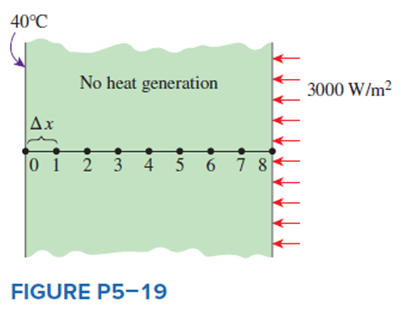Consider steady heat conduction in a plane wall whose left surface (node 0) is maintained at 40°C while the right surface (node 8) is subjected to a heat flux of 3000 W/m2. Express the finite difference formulation of the boundary nodes 0 and 8 for the case of no heat generation. Also obtain the finite difference formulation for the rate of heat transfer at the left boundary. 
What will be an ideal response?
A plane wall with no heat generation is subjected to specified temperature at the left (node 0) and heat flux at the right boundary (node 8). The finite difference formulation of the boundary nodes and the finite difference formulation for the rate of heat transfer at the left boundary are to be determined.
You might also like to view...
Schematic diagrams ____.
a. are used to represent how the circuit generally appears b. show components mounted in their general location with connecting wires c. show components in their electrical sequence without regard for physical location d. show all hypothetically possible logical relations
Express 2,070 cubic millimeters as cubic centimeters.
Fill in the blank(s) with the appropriate word(s).
Describe the steps taken to perform and oil pressure test.
What will be an ideal response?
According to the maximum power transfer theorem, maximum power is delivered to any load when the load resistance is:
A) exactly equal to the source resistance. B) less than one-half of the source resistance. C) larger than source resistance. D) at least twice or more than the source resistance.